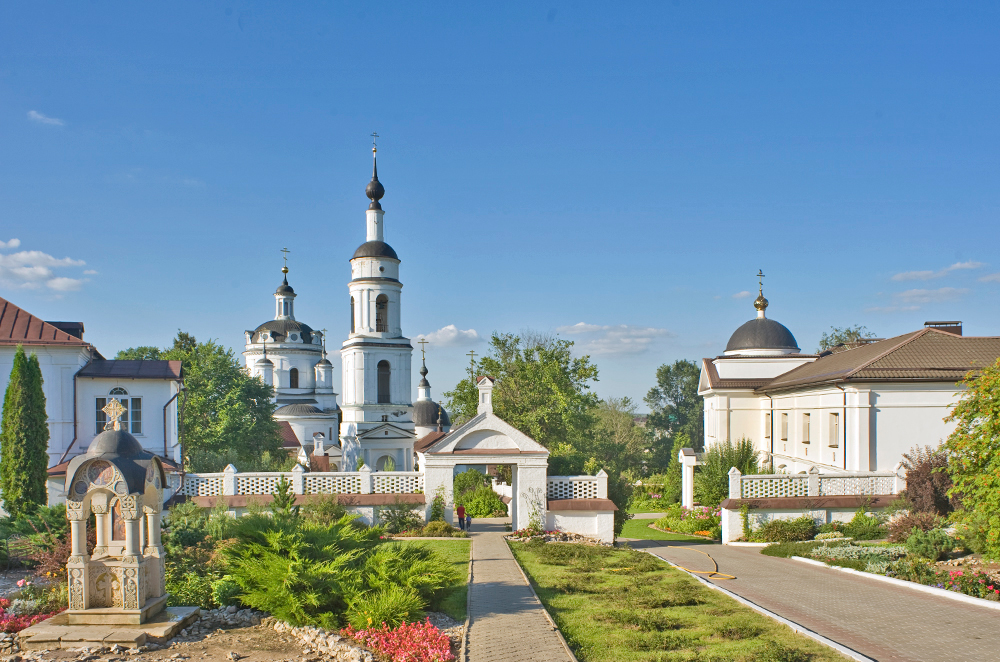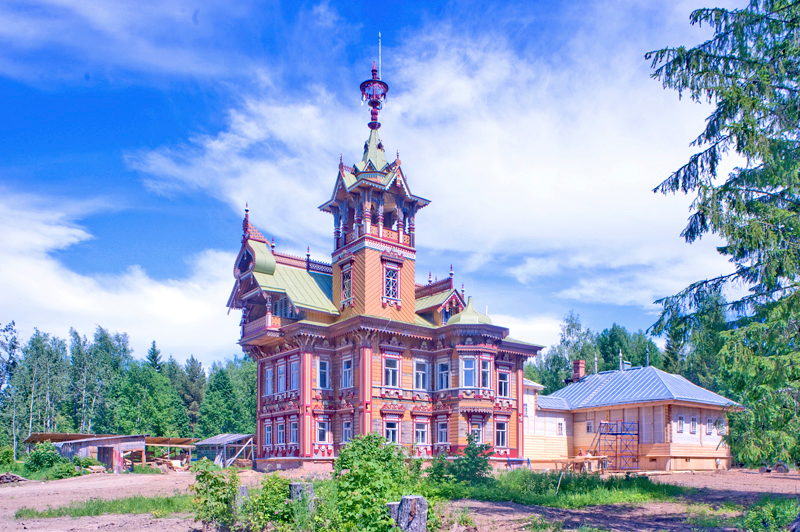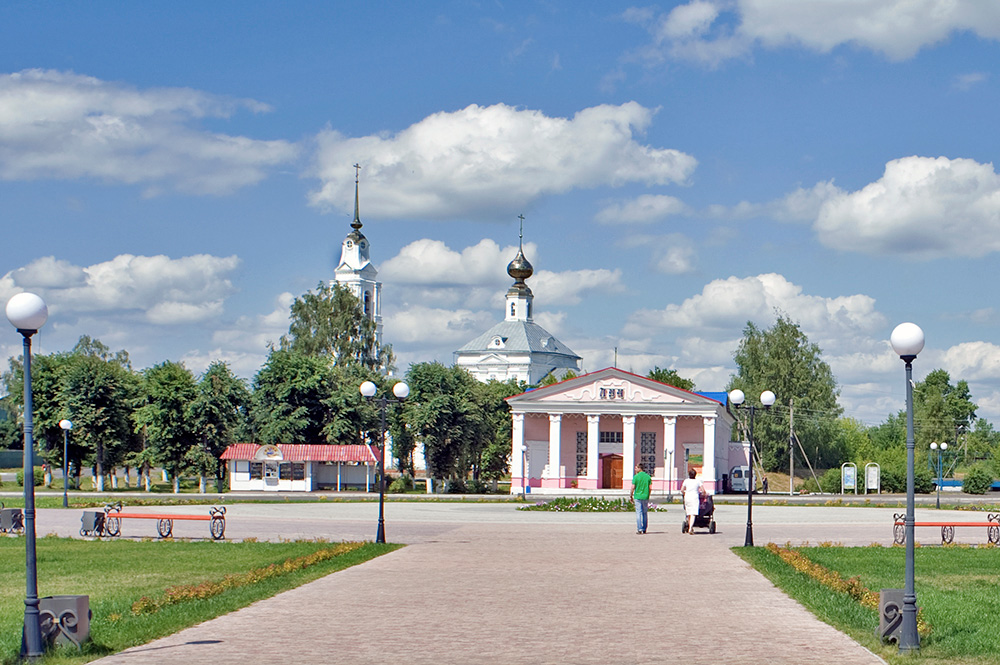Maloyaroslavets: Where Napoleon's fate was sealed

Photographs by William Brumfield
Few historical events are more widely known than the catastrophic retreat of Napoleon’s Grand Armee from Moscow in October 1812. Less known is the role in this retreat played by the small town of Maloyaroslavets, whose defense on Oct. 24, 1812, played a decisive role in compelling Napoleon’s forces to head down the road to ruin.
Maloyaroslavets (population 28,000) is located some 75 miles southwest of Moscow on the Luzha River, a right tributary of the Protva, which in turn flows into the Oka, part of the Volga basin. The town still has the remains of a flattened hillock that served as a citadel for a tribe of Vyatichi, local Slavs who were subdued by Kiev’s Prince Svyatoslav in the second half of the 10th century.
Early history
The present town, however, was founded only at the end of the 14th century by Prince Vladimir the Brave of Serpukhov (1353-1410), who named it after his fourth son, Yaroslav (1388-1426). The first written reference to the town occurred in chronicles under the year 1402, which is considered the town’s official founding date. At the same time Vladimir established what would become the town’s major spiritual and cultural institution, the St. Nicholas-Chernoostrovsky Monastery, located not far from the ancient citadel.
Yaroslav ruled only briefly in the town that his father had founded; he and two of his brothers succumbed to the plague in 1426. His remains now rest in the Archangel Cathedral of the Moscow Kremlin.
Over the next four centuries, Maloyaroslavets developed into a modest local center, a status formalized in 1776 during Catherine the Great’s administrative reforms of Russia’s vast territory. The town was placed within the province of Kaluga, the regional center located 35 miles to the southwest. The oldest surviving church, dedicated to the Kazan Icon of the Virgin, was built in the early 18th century and has recently been restored.
Facing Napoleon
The placid existence of Maloyaroslavets would be shattered — and most of the town destroyed — by the momentous events of late October 1812. Isolated in a half-ruined Moscow and with no prospects of Russia’s suing for peace, Napoleon and his much reduced army (about 110,000 troops) began their exodus from Moscow on Oct. 19.
How to get there:
Because of lack of fodder, the Grand Armee already faced catastrophic limitations in cavalry, artillery and transport — all of which depended on horses. The intention was to replenish depleted supplies by marching southwest toward relatively unscathed territory—perhaps as far as Ukraine.
However, the path southwest was threatened by the Russian army, preserved as a coherent fighting force by Field Marshal Mikhail Kutuzov after the cataclysmic Battle of Borodino, which took place on Sept. 7, 1812. By establishing his main camp at Tarutino on the Old Kaluga Road to the southwest of Moscow, Kutuzov had artfully covered the main southern routes available to Napoleon.
On Oct. 18 Russian forces inflicted a sharp defeat on a probing operation by Marshal Murat near Tarutino, a clear sign that Kutuzov’s army was full of fight. Switching to the New Kaluga Road, Napoleon’s army reached Borovsk by Oct. 22 and began to move toward Maloyaroslavets on the way to Kaluga.
By the next day, Oct. 23, both sides were confused as to the precise locations of the main body of their opponents’ forces. Alarmed by Russian cavalry raids, Napoleon paused and sent his 13th Division, commanded by Alexis Joseph Delzons, ahead to Maloyaroslavets early on the 24th. Kutuzov ordered Dmitry Dokhturov, commander of the 6th Corps, to counter this move, and as the day unfolded, both sides fed more forces into the firestorm of battle. The French forces, which included a large contingent of Italians, several times crossed the Luzha River at St. John’s Meadow (Ivanovsky Lug) and stormed the heights near the Church of St. John the Baptist (1770s) and the St. Nicholas Monastery.
The town itself, which had about 1,500 inhabitants, changed hands eight times during the day in the course of savage hand-to-hand combat. The few streets were rapidly consumed by flames, and many of the wounded died in burning ruins. Russian losses were some 7,000, and the French suffered perhaps as many as 6,000, including General Delzons.
As the day waned, Kutuzov abandoned the struggle for Maloyaroslavets and shifted his forces to prepared positions just to the south, thus blocking the road to Kaluga. Left in possession of a small, ruined town, and with reduced cavalry and artillery (due to the lack of horses), Napoleon made the fateful decision to turn back to the northwest and the already devastated road to Smolensk. Maloyaroslavets proved the culminating clash in a week that would turn Napoleon’s Grand Armee toward its agony.
After the war
In the following decade Maloyaroslavets gradually recovered, and by the middle of the 19th century, it had over 2,500 inhabitants. The St. Nicholas Monastery was imposingly rebuilt in a neoclassical style, but its main gate was left as a memorial with clear traces of the fighting. Nearby is a small memorial to the death of General Delzons. In 1991 the monastery was returned to the Orthodox Church, which revived it as a convent.
During the half century before the centennial anniversary of the battle, Maloyaroslavets witnessed the rebuilding of its major churches such as the Cathedral of the Dormition (1912). During the same period, memorials to the battle and to Kutuzov were placed throughout the town. Today there are three interesting museums in the center of town that are dedicated to the events of 1812.
During World War II Maloyaroslavets was again engulfed by war and endured German occupation from Oct. 18, 1941 until its liberation on Jan. 2, 1942 after Red Army successes in the Battle of Moscow. At the center of town is a monument to Marshal Georgy Zhukov, who was born near Maloyaroslavets.
This century has resulted in attractive enhancements to the design of the center of Maloyaroslavets. With its picturesque location and broad vistas, Maloyaroslavets has combined a sensitive approach to historical memory with an effective plan of urban development.
New book by William Brumfield reveals the miraculous architecture of the Russian North>>>
Subscribe to get the hand picked best stories every week
All rights reserved by Rossiyskaya Gazeta.
Subscribe
to our newsletter!
Get the week's best stories straight to your inbox

